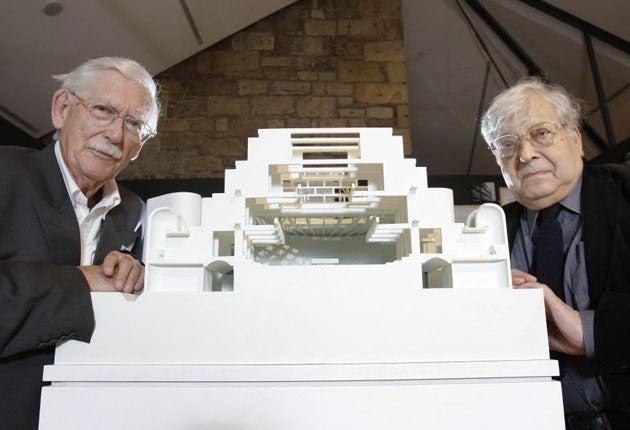'Rubble Club' helps architects pick up the pieces
Society set up to offer support to designers whose work has been demolished

Just imagine: you spend years working on the design of a new building, months constructing it with the help of engineers, and finally see it open amid much pomp and ceremony.
Then, barely months, or even weeks later, the cranes move in and your treasured creation is demolished. In the space of just a few hours, your architectural masterpiece is reduced to mere rubble and dust.
If something akin to this has happened to you, you probably qualify to be a member of The Rubble Club. Born out of the frustration and traumatic experiences of leading Scottish architects, the club is a support network designed to help "bereaved" architects. It aims to draw attention to the fact that many leading architects' work survives for an extremely limited amount of time, and give voice to the disappointed of the designers responsible for creating them.
Among the first firms to sign up was Reiach and Hall, an Edinburgh-based practice. It designed the sophisticated platform canopy above the tolls on the Forth Bridge in Scotland, but saw it torn down when the Scottish National Party took power and implemented one of its election pledges.
"We won a small competition four years ago to design the toll canopy, and then spent probably just over a year designing it," Neil Gillespie, director of Reiach and Hall, told The Independent. "When you put a lot of work into something like that you're pleased it's there and feel a sense of pride. You don't do projects like these just for the money. You do them because you think the architecture matters. To see it torn down just nine months later is a desperate disappointment."
The club was inspired by Isi Metzstein, a renowned architect at the modernist firm Gillespie, Kidd & Coia. He and his colleague Andy MacMillan used to meet up and drink their favourite Scottish whisky, Macallan, while mourning the death of treasured architecture. They christened their little society The Macallan Club. But so widespread was the sense of dissatisfaction at buildings reduced to memory within the architect's lifetime that the Rubble Club was created, to formalise a casual practice.
Other members of the club include the architects Parr Partnerships, who were behind the Chungwha Factory, a white elephant that cost the taxpayer £10m and was raised at Eurocentral in Lanarkshire in 1996 but pulled down 10 years later. Owen Leder's Tricorn Centre in Portsmouth was rubbled to make way for a shopping mall and car park, Southwark Towers, home by London Bridge station to PricewaterhouseCoopers for 25 years, and designed by TP Bennett and Son, was demolished last year to make way for the Shard of Glass and ESA Architect's Dolphin Centre in Romford, Essex, with a pyramid roof, lasted only 24 years before it made way for an Asda.
Similarly, the Notre Dame College of Education in the Bearsden area of Glasgow, latterly known as St Andrew's College, another of Gillespie, Kidd & Coia's creations, was demolished in 2007 to make way for Bearsden Academy, despite being listed. And, it seems, Lord Rogers could be asking to join soon – the Rubble Club website mentions that the Paul Hamlyn library at Thames Valley University in Slough is due to be bulldozed this year.
Membership of the club is dependent on "... three key ground rules. Firstly, the building's architect must be alive and not party to its destruction, secondly the building must be built with the intention of permanence (exhibitions, shops and interiors are not eligible), and thirdly it must be deliberately destroyed or radically altered; it can't simply burn down."
Stephen Hodder, director of Manchester-based firm Hodder Associates, has sought solace in the club because its award-winning Berners swimming pool, in Grange-over-Sands, Cumbria, is to be demolished after just five years. "What I mourned," he said, "was how expendable all that energy was when so many people had given so much."
John Glenday, Rubble Club secretary, describes the network as "a kind of AA support group for distressed architects". He said that he was hopeful that the group could expand. "Most people don't appreciate the energy and commitment it takes to build something, or the trauma of seeing it destroyed overnight. Losing all that material and creativity is very stressful".
Join our commenting forum
Join thought-provoking conversations, follow other Independent readers and see their replies
Comments